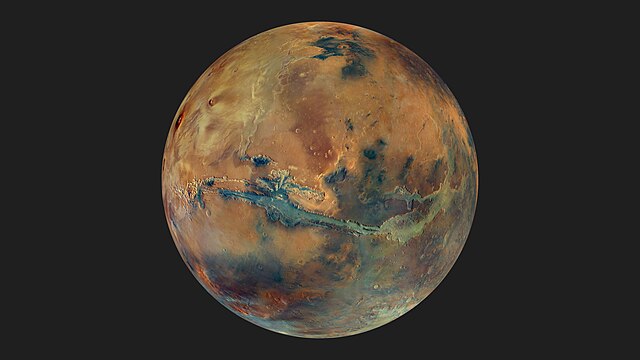
A livestream from Mars was broadcast for the first time on Friday, using a once-obsolete camera aboard the European Space Agency’s Mars Express Orbiter.
ESA’s feed lasted for an hour. However, because of the vast distance between Earth and Mars, the images took 17 minutes to reach Earth, and a further minute to pass through various receivers and servers on the ground, making it not quite “live”.
The orbiter’s Visual Monitoring Camera (VMC) transmitted a new frame every 50 seconds. This camera normally stores the images it takes and transmits them in a batch every couple of days, so this is the first time ESA has attempted to stream them as they are taken.
Livestream from Mars a unique event
There are only a few examples of “live” footage in space, including the famous Apollo missions showing astronauts walk on the moon’s surface.
Another such event took place last year during NASA’s DART mission. In a bold and deliberate move, the space agency purposely directed a spacecraft to collide with an asteroid. This extraordinary mission was broadcasted live, providing a unique opportunity for viewers to witness this remarkable feat in real-time.
“These missions were all pretty close to home and others farther away sent perhaps an image or two in near real-time,” the ESA said. “When it comes to a lengthy livestream from deep space, this is a first.
“The event has been put on to mark the 20th birthday of ESA’s Mars Express, the mission that placed the Mars Express Orbiter in orbit around the planet and deployed the ill-fated Beagle 2 lander.
Despite the failure of Beagle 2 to ever communicate with Earth after reaching the surface, the orbiter became Europe’s first mission to another planet and continues to operate today in an elliptical orbit of between around 300 and 10,000 kilometres.
James Godfrey at ESA said in a statement before live streaming began that there is no guarantee that the stream will go according to plan.
“This is an old camera, originally planned for engineering purposes, at a distance of almost three million kilometres from Earth – this hasn’t been tried before and to be honest, we’re not 100% certain it’ll work.”
The VMC was originally designed to monitor the separation of the Beagle 2 lander and had been turned off after launch.
But it was turned back on for science and outreach reasons in 2007 after more sophisticated image-processing techniques were developed that made the relatively simple camera useful once again.
Related: Mars May Have Seen Snow 400,000 Years Ago
See all the latest news from Greece and the world at Greekreporter.com. Contact our newsroom to report an update or send your story, photos and videos. Follow GR on Google News and subscribe here to our daily email!



